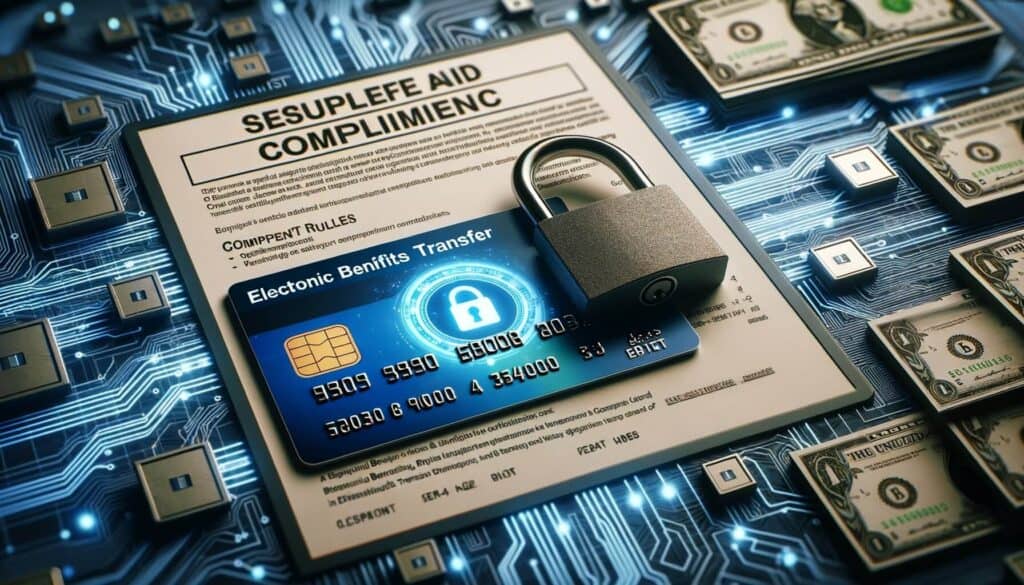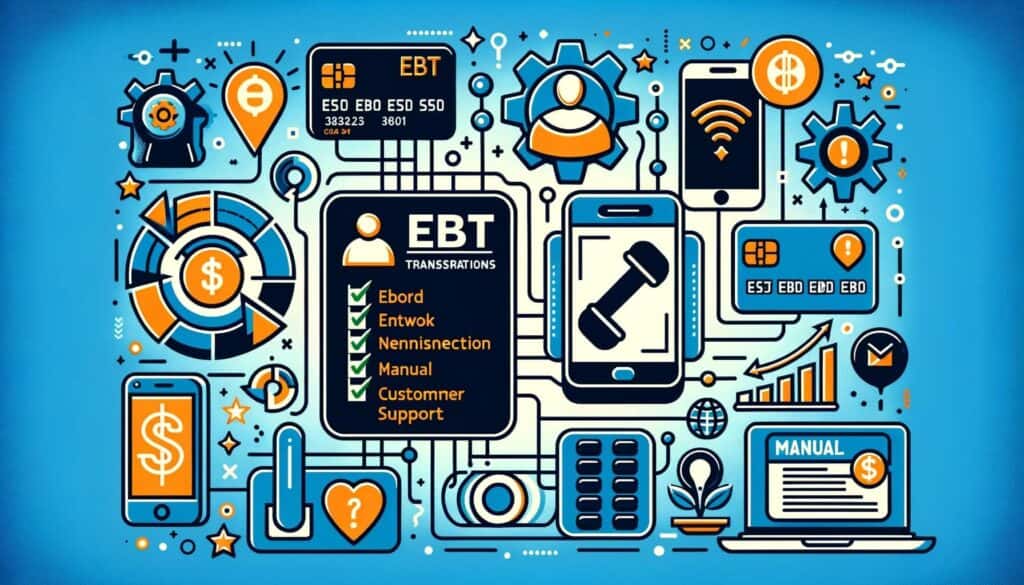
By Sharon Watson January 30, 2025
In today’s modern world, electronic benefit transfer (EBT) transactions have become an essential part of the welfare system. EBT allows recipients to access their benefits through a card that works like a debit card, making it convenient and efficient for both the recipients and the government agencies that administer the benefits.
However, to ensure smooth and secure EBT transactions, it is crucial to have well-trained staff who understand the intricacies of the process. In this article, we will explore the importance of staff training in EBT transactions and provide a comprehensive guide on how to train your staff effectively.
Understanding the Basics of EBT Transactions
Before diving into the training process, it is essential to have a solid understanding of the basics of EBT transactions. EBT transactions involve the electronic transfer of funds from government benefit programs, such as the Supplemental Nutrition Assistance Program (SNAP) or Temporary Assistance for Needy Families (TANF), to eligible recipients. These funds are loaded onto an EBT card, which recipients can use to purchase eligible items at authorized retailers.
Step-by-Step Guide: Setting Up EBT Processing Systems

To ensure that your staff can process EBT transactions smoothly, it is crucial to have a well-established EBT processing system in place. Here is a step-by-step guide to setting up EBT processing systems:
1. Determine eligibility: Before implementing EBT processing systems, it is essential to determine if your organization is eligible to participate in EBT programs. Contact the appropriate government agency to understand the requirements and complete the necessary paperwork.
2. Obtain necessary equipment: To process EBT transactions, you will need specific equipment, such as point-of-sale (POS) terminals or card readers. Ensure that your equipment is compatible with the EBT system and meets all security requirements.
3. Establish a connection: Connect your EBT processing system to the appropriate network, such as the state EBT network or a third-party processor. This connection allows you to communicate with the EBT system and process transactions in real-time.
4. Train staff on equipment usage: Once you have the necessary equipment in place, provide comprehensive training to your staff on how to use the equipment effectively. This training should cover basic functions, troubleshooting, and security protocols.
5. Test the system: Before going live, conduct thorough testing of your EBT processing system to ensure that it is functioning correctly. Test various transaction scenarios, including purchases, refunds, and balance inquiries, to identify and resolve any issues.
Training Staff on EBT Transaction Procedures and Guidelines

Now that you have set up your EBT processing system, it is time to train your staff on the specific procedures and guidelines for processing EBT transactions. Here are some key areas to focus on during staff training:
1. Understanding program rules: Familiarize your staff with the rules and regulations of the specific benefit programs you are administering. This includes understanding eligible items, purchase restrictions, and any special guidelines for processing EBT transactions.
2. Cardholder verification: Train your staff on how to verify the identity of EBT cardholders to prevent fraud and ensure that benefits are used by the intended recipients. This may involve checking identification documents or using biometric verification methods.
3. Transaction processing: Provide step-by-step training on how to process EBT transactions using your specific equipment and software. This should include entering the correct transaction amount, selecting the appropriate benefit program, and obtaining necessary signatures or PINs.
4. Handling exceptions: EBT transactions may encounter exceptions, such as insufficient funds or declined transactions. Train your staff on how to handle these exceptions, including providing alternative payment options or referring cardholders to appropriate resources for assistance.
5. Privacy and confidentiality: Emphasize the importance of privacy and confidentiality when handling EBT transactions. Train your staff on how to protect cardholder information and comply with relevant data protection regulations.
Ensuring Security and Compliance in EBT Transactions

Security and compliance are paramount when it comes to EBT transactions. As a responsible organization, it is crucial to train your staff on security protocols and ensure compliance with relevant regulations. Here are some key areas to focus on:
1. Data security: Train your staff on the importance of data security and the measures in place to protect cardholder information. This includes using secure networks, encrypting data, and following best practices for password management.
2. Fraud prevention: Educate your staff on common fraud schemes related to EBT transactions and how to identify and prevent them. This may include recognizing suspicious transactions, understanding common fraud indicators, and reporting any potential fraud to the appropriate authorities.
3. Compliance with regulations: Stay up to date with the latest regulations governing EBT transactions and ensure that your staff is trained on these regulations. This includes understanding requirements for record-keeping, reporting, and audits.
4. Internal controls: Implement internal controls to prevent unauthorized access to EBT processing systems and ensure that transactions are processed accurately. Train your staff on these controls, including segregation of duties, dual authorization, and regular reconciliation of transaction records.
Troubleshooting Common Issues in EBT Transactions

Despite thorough training and robust systems, EBT transactions may encounter common issues that require troubleshooting. It is essential to equip your staff with the necessary knowledge and skills to address these issues promptly. Here are some common issues and their potential solutions:
1. Card reading errors: If a card reading error occurs, instruct your staff to check the card for any visible damage or dirt. They should also ensure that the card is inserted correctly into the card reader. If the issue persists, they may need to try a different card reader or contact technical support.
2. Insufficient funds: When a cardholder has insufficient funds to complete a transaction, your staff should inform them of the remaining balance and suggest alternative payment methods. They can also provide information on how to check their balance or contact the appropriate agency for assistance.
3. Declined transactions: If a transaction is declined, your staff should check for any error messages on the POS terminal or card reader. They should also verify that the card is not expired and that the cardholder is eligible to use the benefits. If the issue persists, they may need to contact the EBT help desk for further assistance.
4. Lost or stolen cards: Train your staff on the proper procedures for handling lost or stolen EBT cards. This may include instructing cardholders to contact the appropriate agency to report the loss and request a replacement card. They should also provide information on how to protect their benefits and prevent unauthorized use.
Advanced Techniques for Efficient EBT Transaction Processing
Once your staff is proficient in the basics of EBT transaction processing, you can introduce them to advanced techniques that can further enhance efficiency and customer service. Here are some advanced techniques to consider:
1. Batch processing: Train your staff on how to process EBT transactions in batches, rather than individually. This can save time and streamline the reconciliation process, especially for high-volume retailers.
2. Mobile EBT processing: Explore the option of mobile EBT processing for staff who need to process transactions outside of a traditional retail environment. This can be particularly useful for outreach programs or mobile food vendors.
3. Integration with inventory management systems: If your organization uses an inventory management system, consider integrating it with your EBT processing system. This integration can help automate inventory tracking and streamline the purchasing process.
4. Reporting and analytics: Train your staff on how to generate and interpret reports from your EBT processing system. This can provide valuable insights into purchasing patterns, inventory management, and program utilization.
Best Practices for Training Staff on EBT Transaction Customer Service
In addition to technical training, it is crucial to train your staff on providing excellent customer service during EBT transactions. Here are some best practices to consider:
1. Empathy and respect: Train your staff to treat EBT cardholders with empathy and respect, recognizing that they may be facing challenging circumstances. Encourage them to listen actively, address concerns, and provide assistance when needed.
2. Clear communication: Emphasize the importance of clear and concise communication during EBT transactions. Train your staff to explain transaction processes, eligibility requirements, and any potential issues in a way that is easily understood by cardholders.
3. Patience and understanding: EBT transactions can sometimes be complex, and cardholders may have questions or difficulties. Encourage your staff to be patient and understanding, providing guidance and support throughout the transaction process.
4. Conflict resolution: Train your staff on effective conflict resolution techniques to handle any disputes or disagreements that may arise during EBT transactions. This may include active listening, finding common ground, and seeking mutually beneficial solutions.
Frequently Asked Questions (FAQs)
Q1: What is the purpose of EBT transactions?
A1: EBT transactions allow eligible recipients to access their government benefits conveniently and securely through a card-based system.
Q2: Can EBT cards be used for any purchase?
A2: No, EBT cards can only be used to purchase eligible items as defined by the specific benefit program. For example, SNAP benefits can be used to buy food items but not alcohol or tobacco.
Q3: How can I check my EBT card balance?
A3: Cardholders can check their EBT card balance by calling the customer service number on the back of the card, visiting the program’s website, or using a designated mobile app.
Q4: What should I do if my EBT card is lost or stolen?
A4: If your EBT card is lost or stolen, contact the appropriate agency immediately to report the loss and request a replacement card. This will help protect your benefits and prevent unauthorized use.
Q5: Can I use my EBT card in other states?
A5: Yes, EBT cards can typically be used in other states, as long as the retailer is authorized to accept EBT transactions and the items being purchased are eligible under the benefit program.
Conclusion
In conclusion, training your staff to process EBT transactions is crucial for ensuring smooth and secure benefit distribution. By understanding the basics of EBT transactions, setting up efficient processing systems, and providing comprehensive training on procedures and guidelines, you can empower your staff to handle EBT transactions with confidence and professionalism.
Moreover, by emphasizing security and compliance, troubleshooting common issues, and introducing advanced techniques, you can further enhance efficiency and customer service in EBT transaction processing. Finally, by training your staff on providing excellent customer service and addressing frequently asked questions, you can create a positive experience for EBT cardholders and contribute to the overall success of the welfare system.
Remember, well-trained staff not only ensure the proper functioning of EBT transactions but also play a vital role in promoting transparency, accountability, and trust in the welfare system. So invest in staff training today and reap the benefits of a well-prepared team that can effectively process EBT transactions and serve the needs of the community.